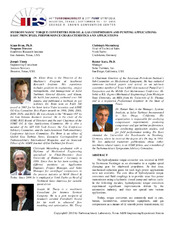| dc.description.abstract | Herrmann Foettinger as an alternative to a regular speed changing gear for shipboard propulsion. At that time, mechanical reduction gears for such high power applications were not available. The core idea of hydrodynamic torque converters and fluid couplings is to provide wear free power transmission using a hydraulic closed pump and turbine cycle. In the following decades, hydrodynamic torque converters experienced significant improvements driven by the automotive industry, and their use spread into various applications. Today, torque converters are commonly used in cars, busses, locomotives, construction equipment, and gas compression as a means of (i) smooth power transmission, (ii) to provide torque amplification during startup conditions, and (iii) to act as a damper for driver and driven equipment torsional disturbances and shock loads. In the oil and gas industry, torque converters are often used as integrated components in drive transmissions for electric motor driven compressors or pumps trains. They provide step-less speed variation along with progressive torque increase towards low speed. For example, torque converters and hydraulic couplings can be used to drive a variable speed centrifugal compressor using a fixed speed electric motor without the need for a variable frequency drive. In recent years, torque converters in combination with planetary gearboxes have been successfully demonstrated as a viable technology for variable speed electric motor driven centrifugal compressor applications. Torque converters are also used as soft starters between generators and gas or steam turbines. The unique power transmission features of the torque converter make it an option for equipment that requires start-up torque assistance and speed control. Modern torque converters up to 65,000 kW have been designed and are widely in operation. | en |


